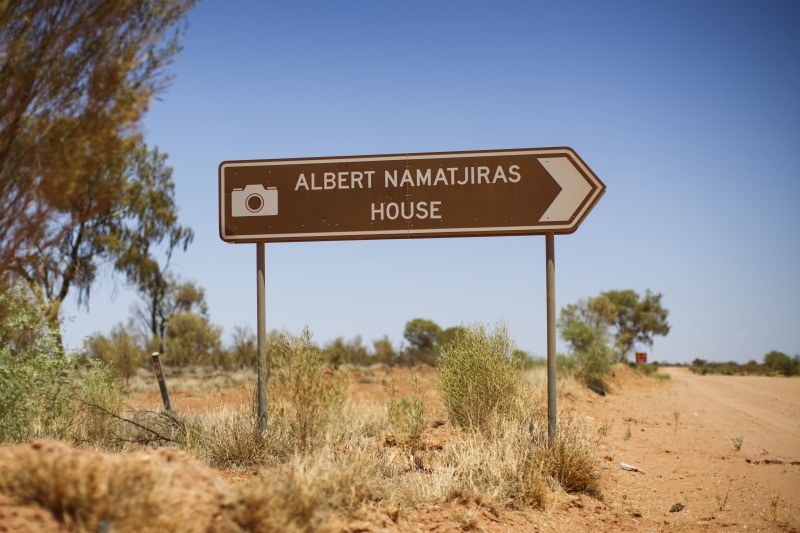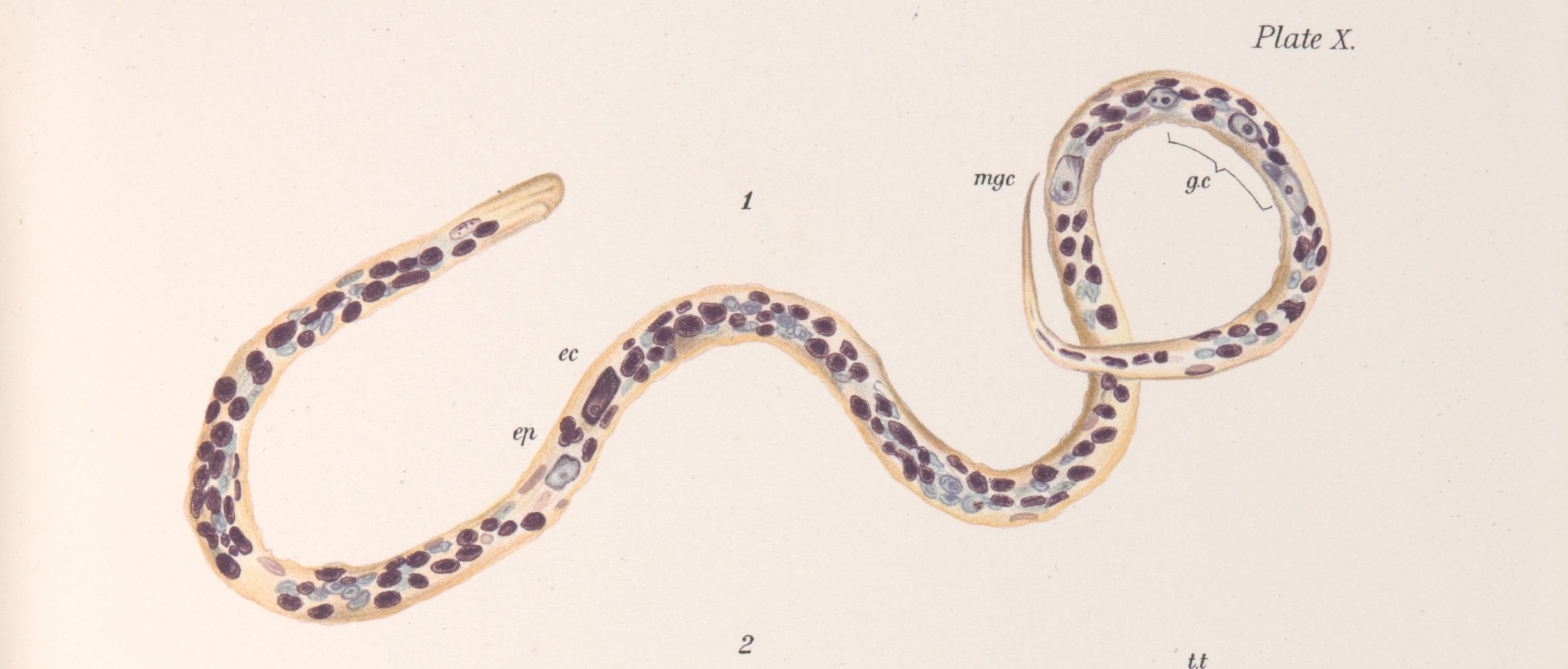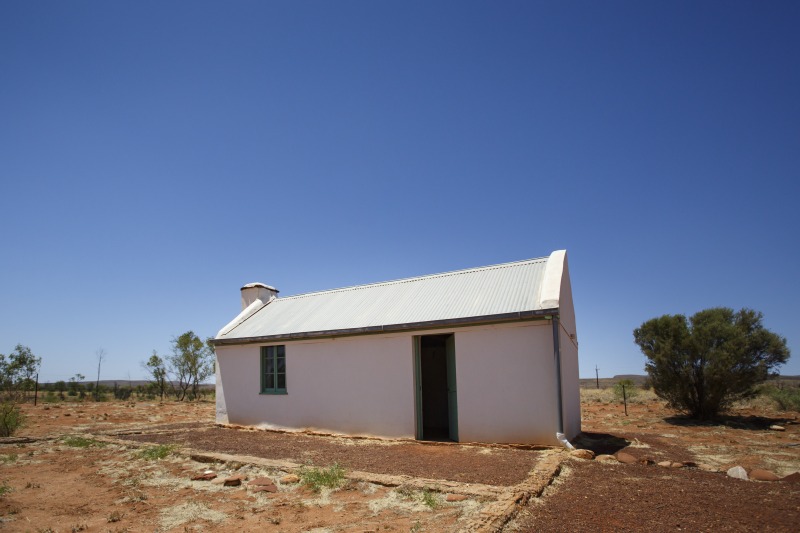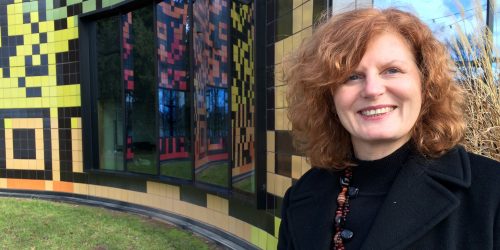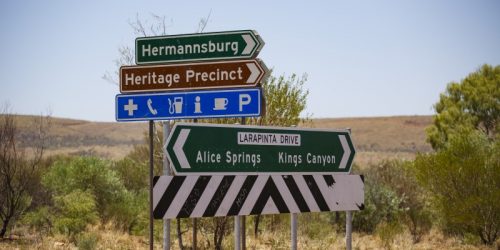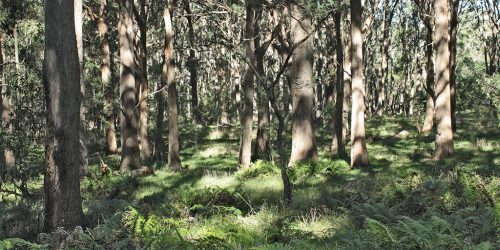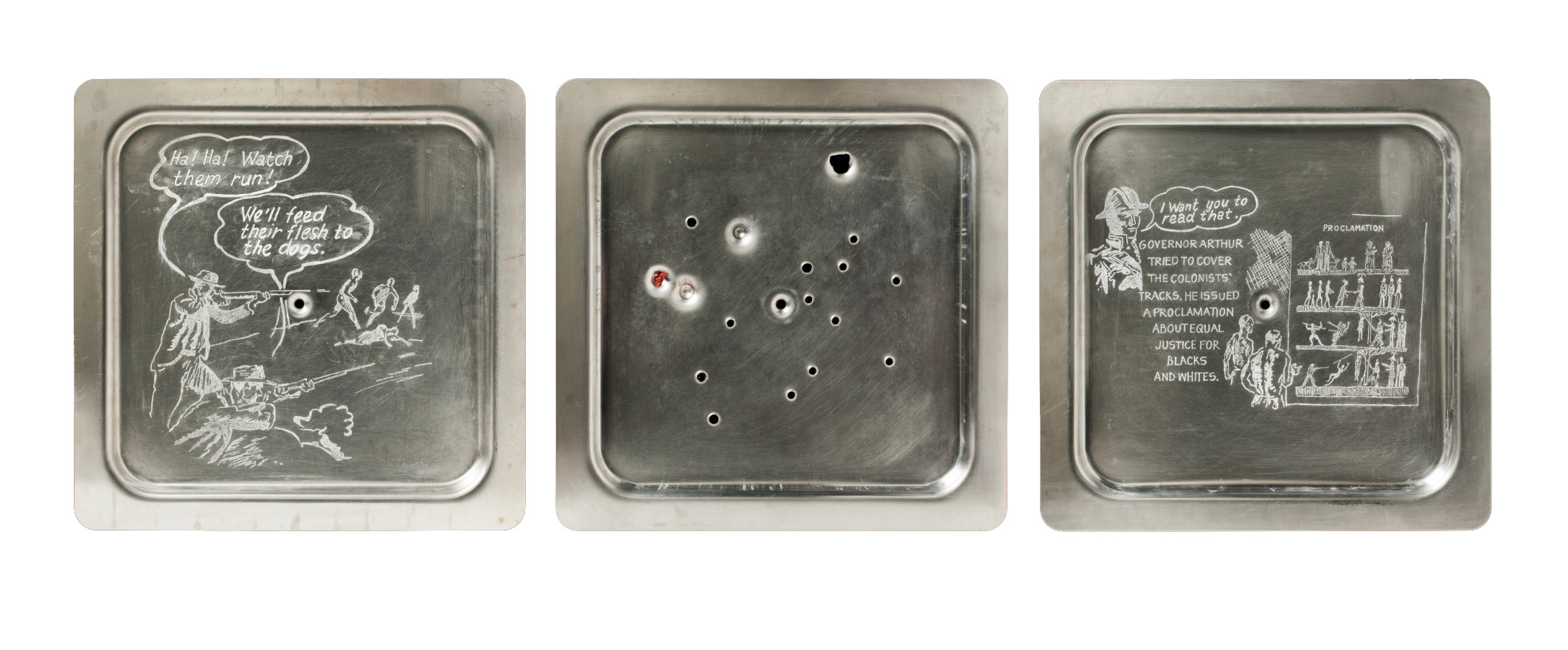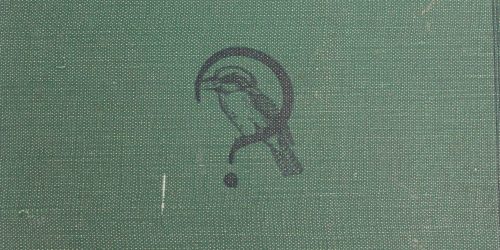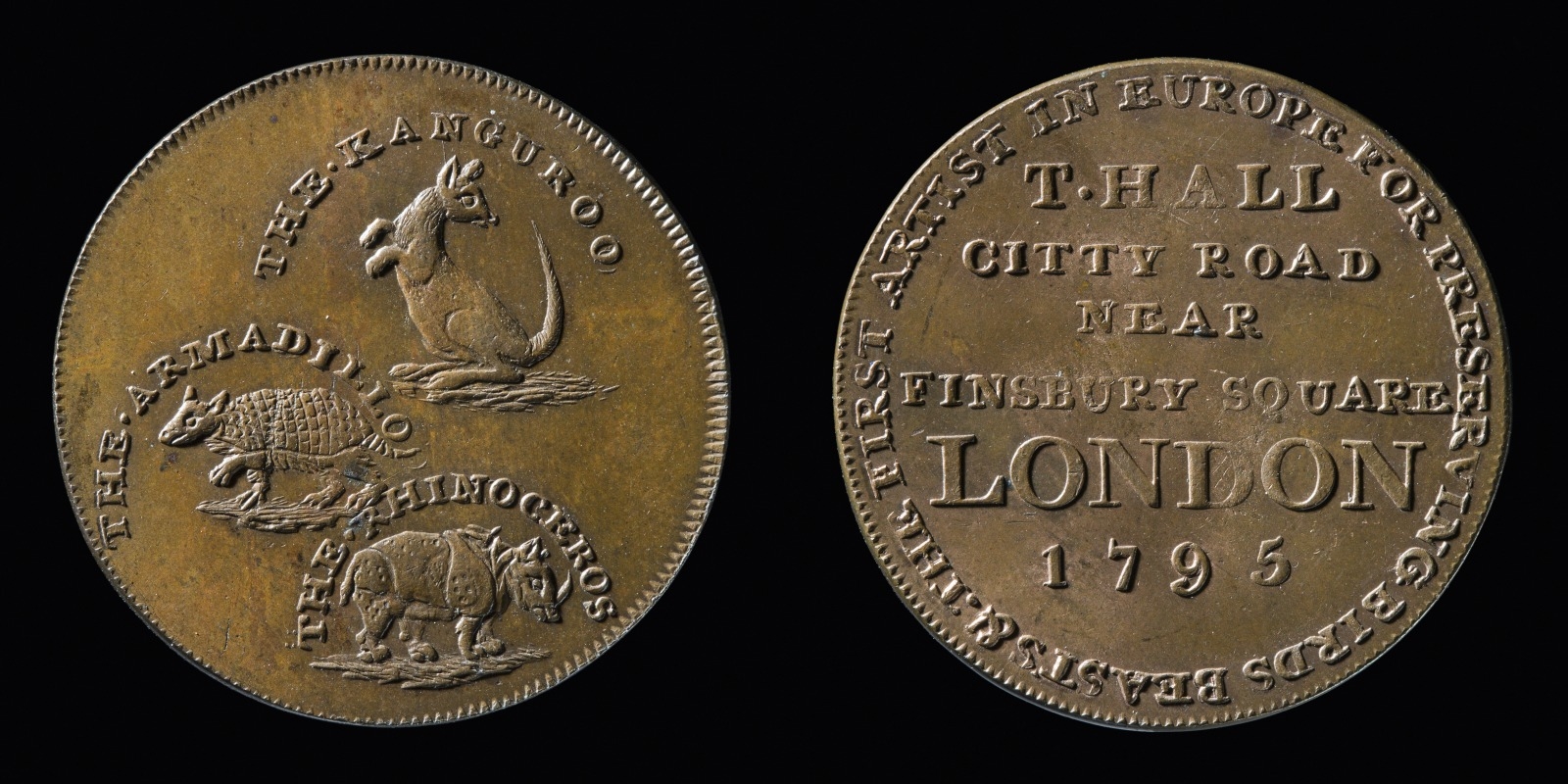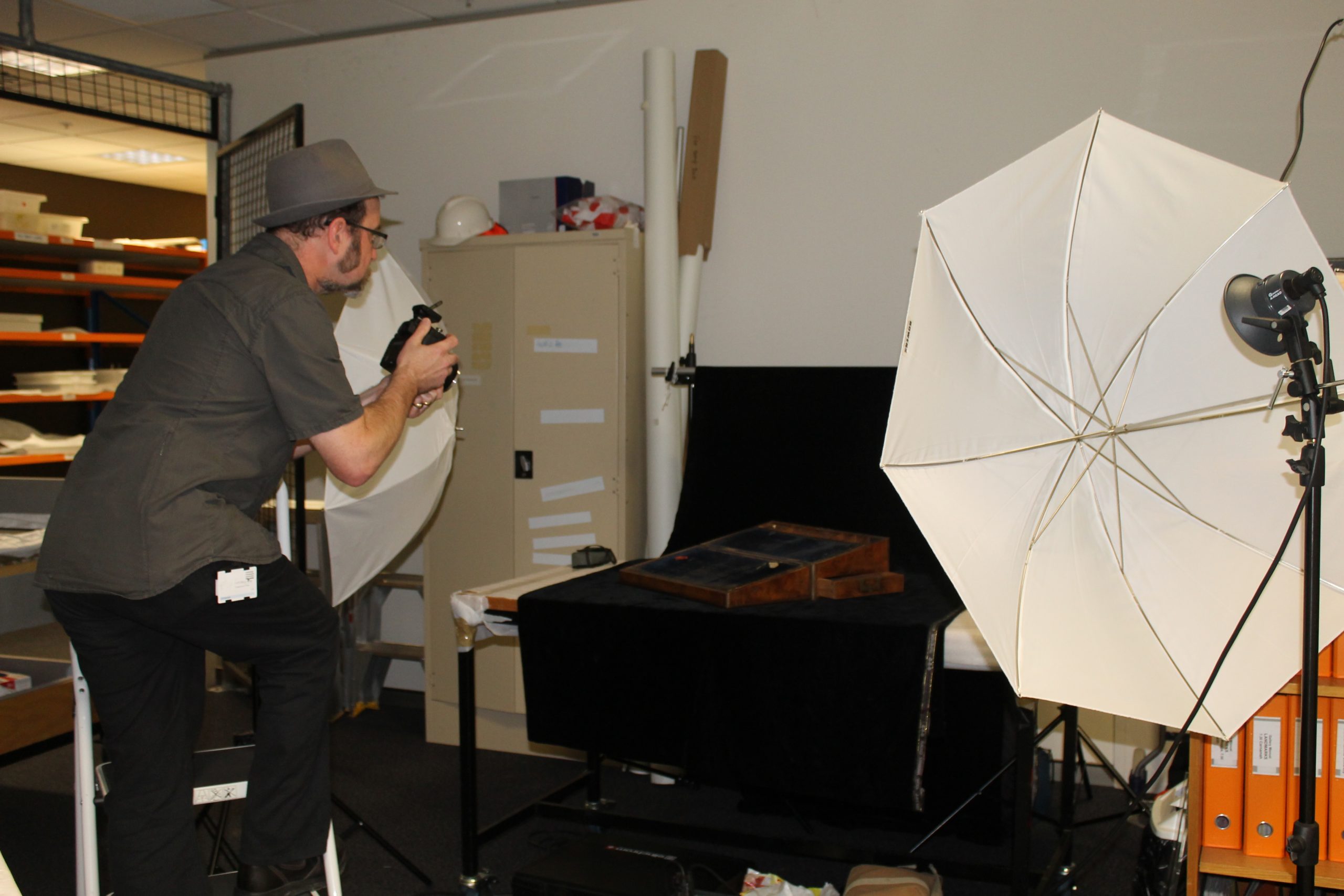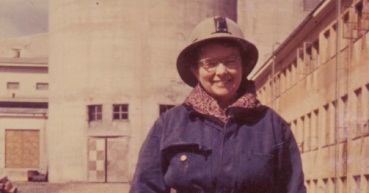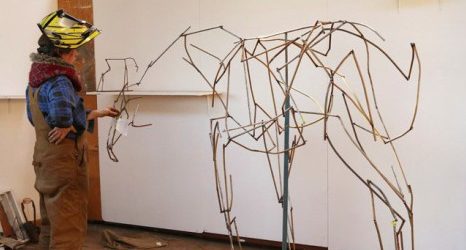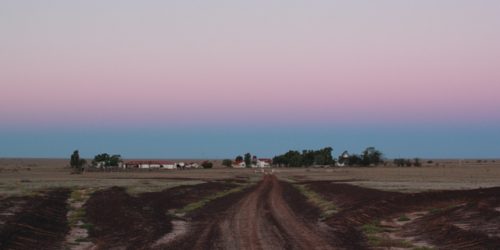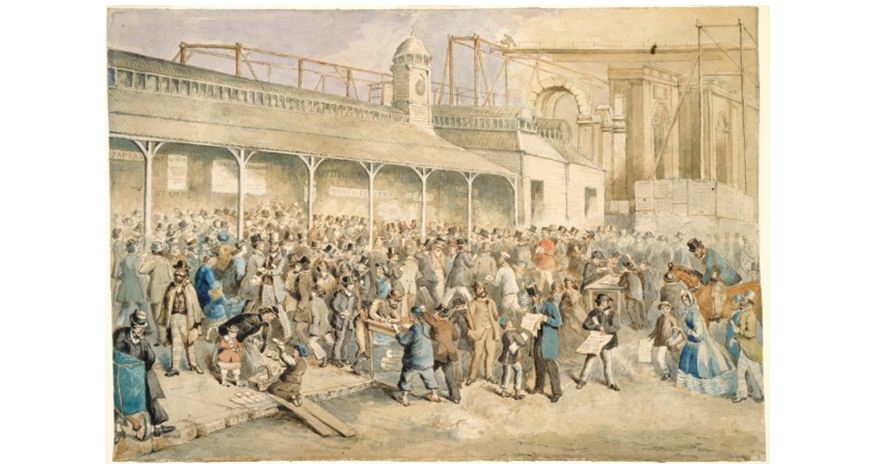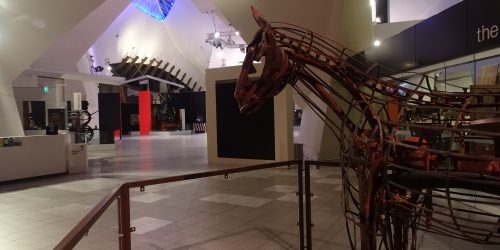A new chapter
On Friday, the Namatjira Legacy Trust was officially launched at the National Museum of Australia. The Museum was pleased to host granddaughters of Albert Namatjira and trustees, Lenie Namatjira and Gloria Pannka, Clara Inkamala, musician Shelli Morris, and Big hART’s Director Scott Rankin and Producer Sophia Marinos, with other special guests to celebrate the occasion. The event also marked the official launch of the Museum’s Ntaria (Hermannsburg) exhibit in the Landmarks...
